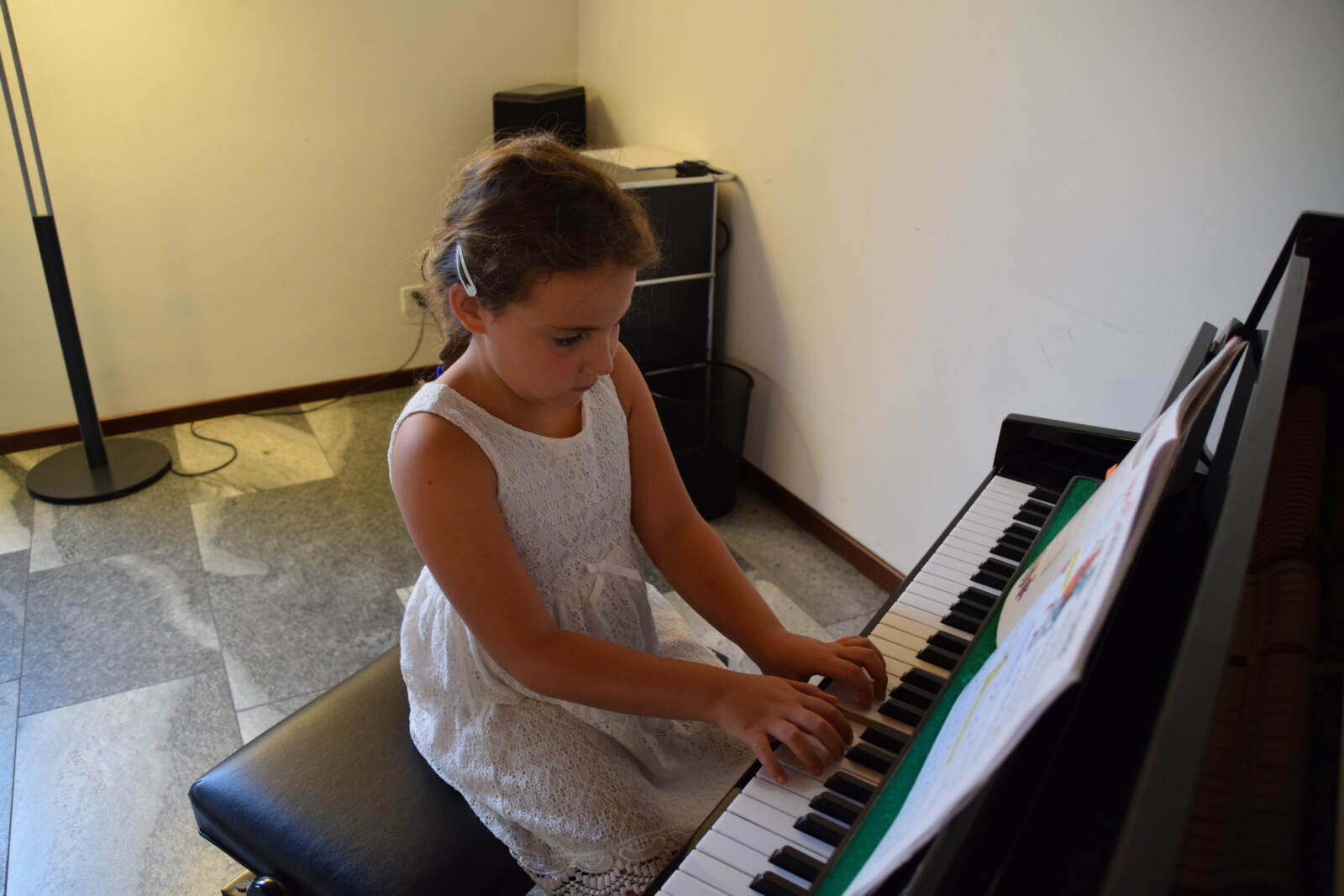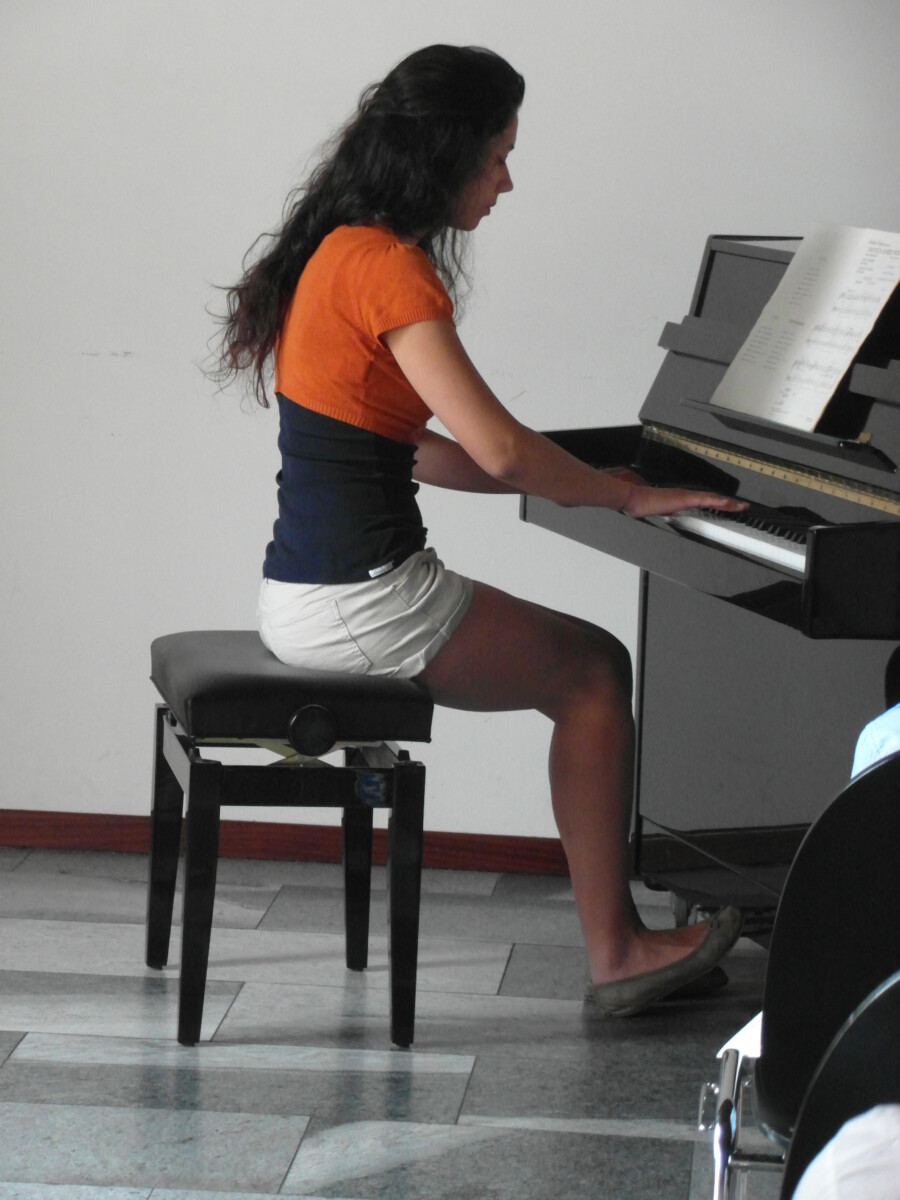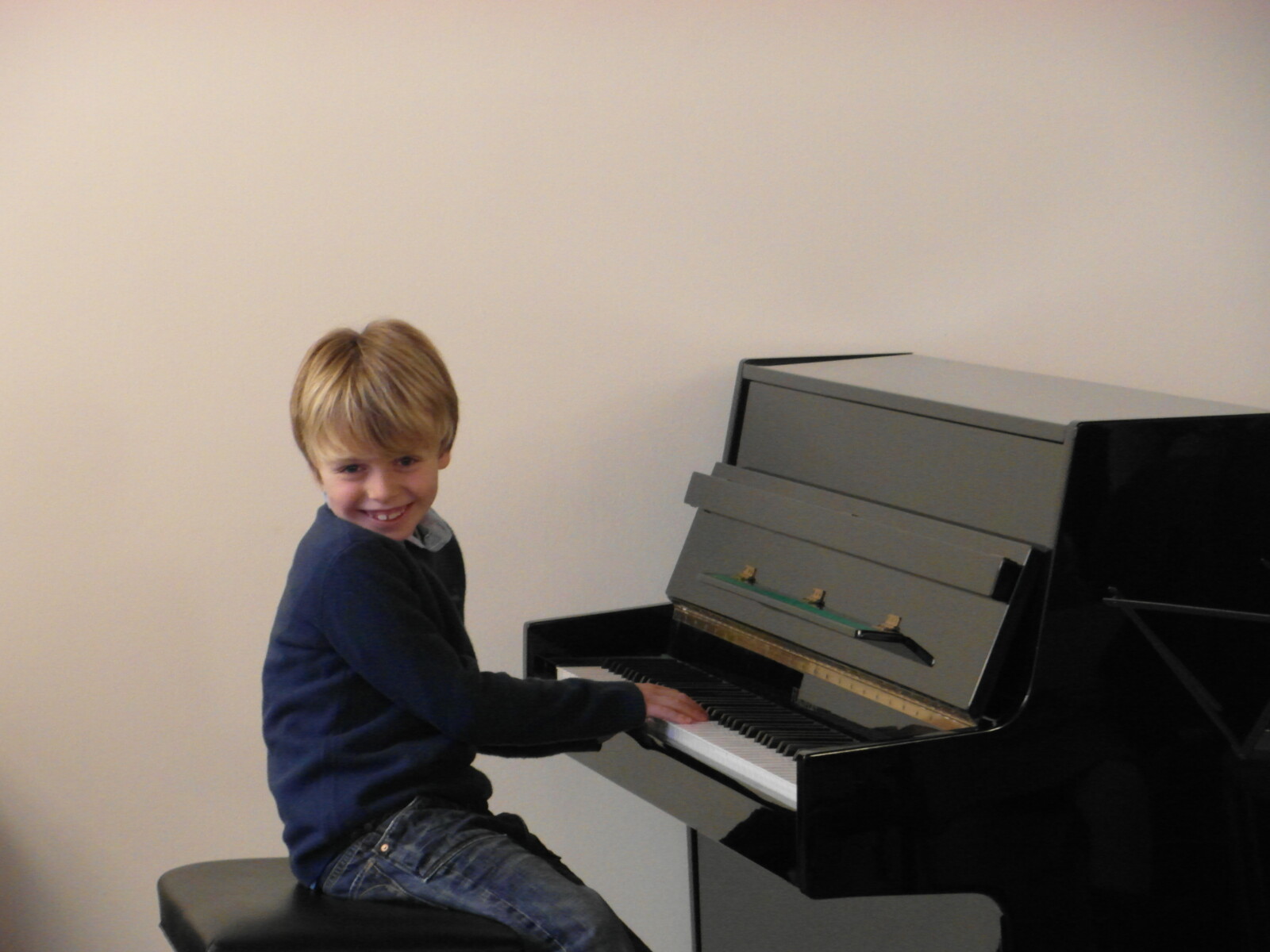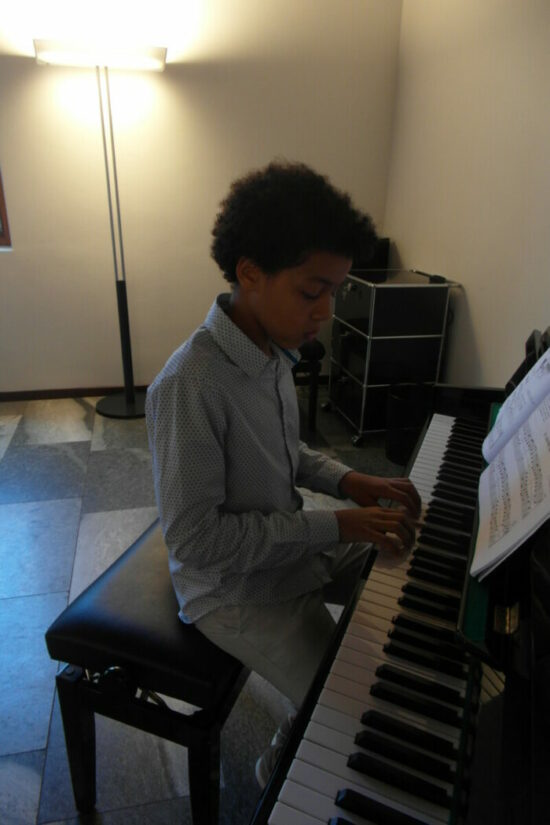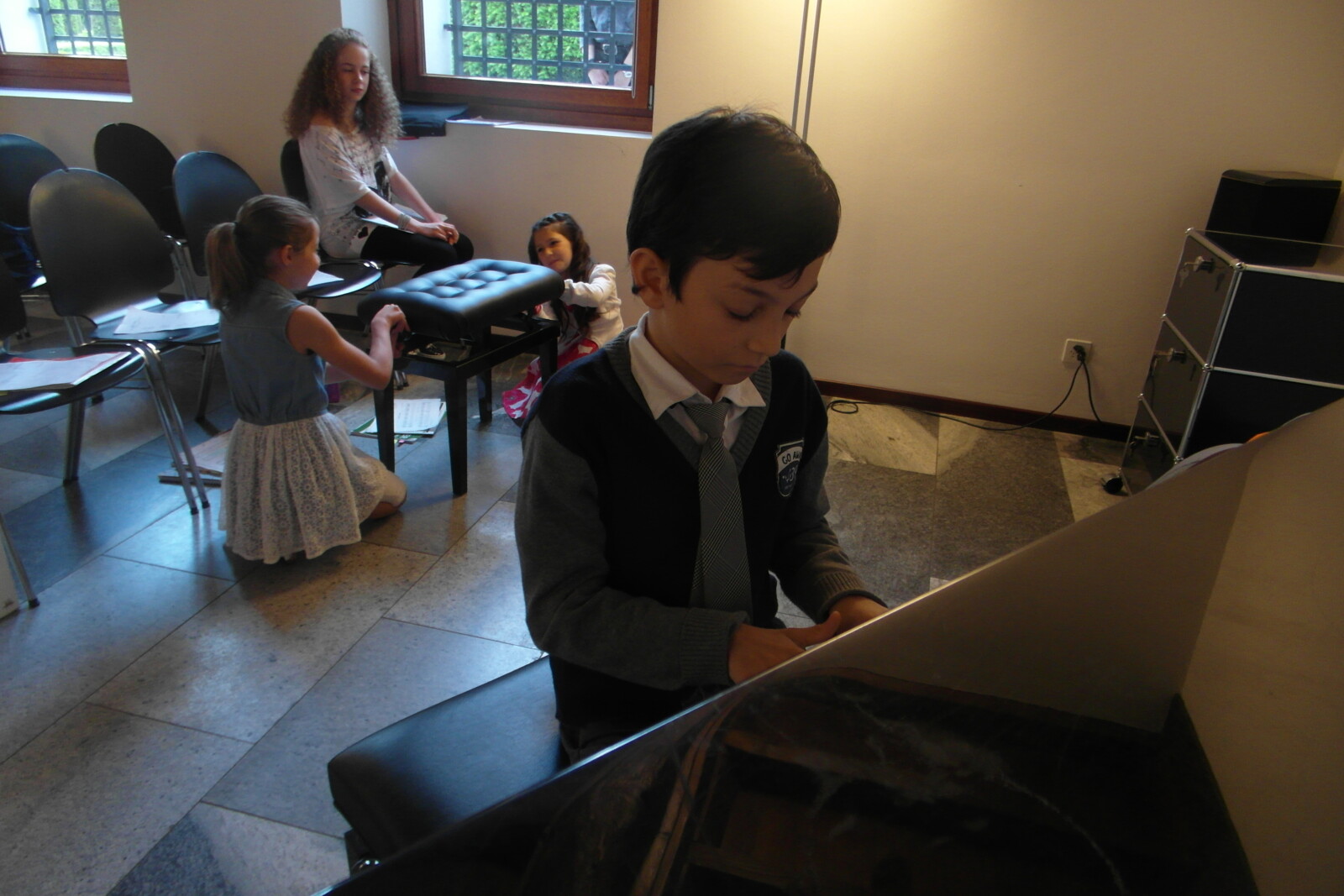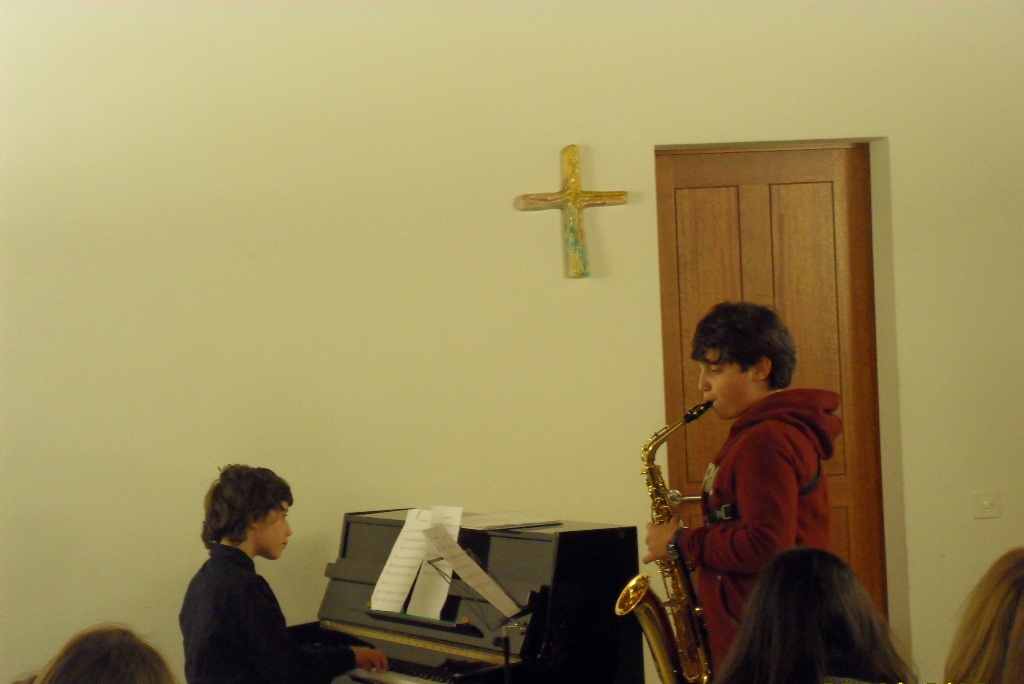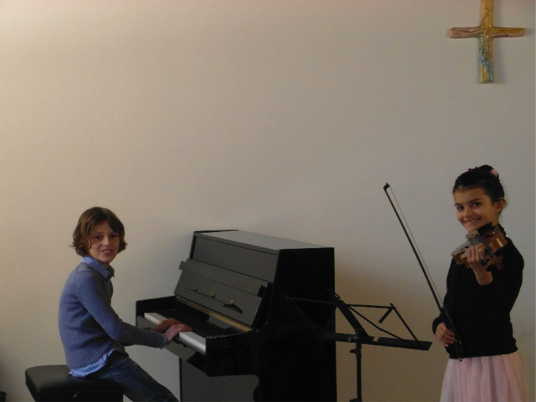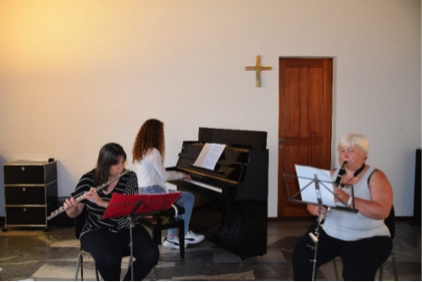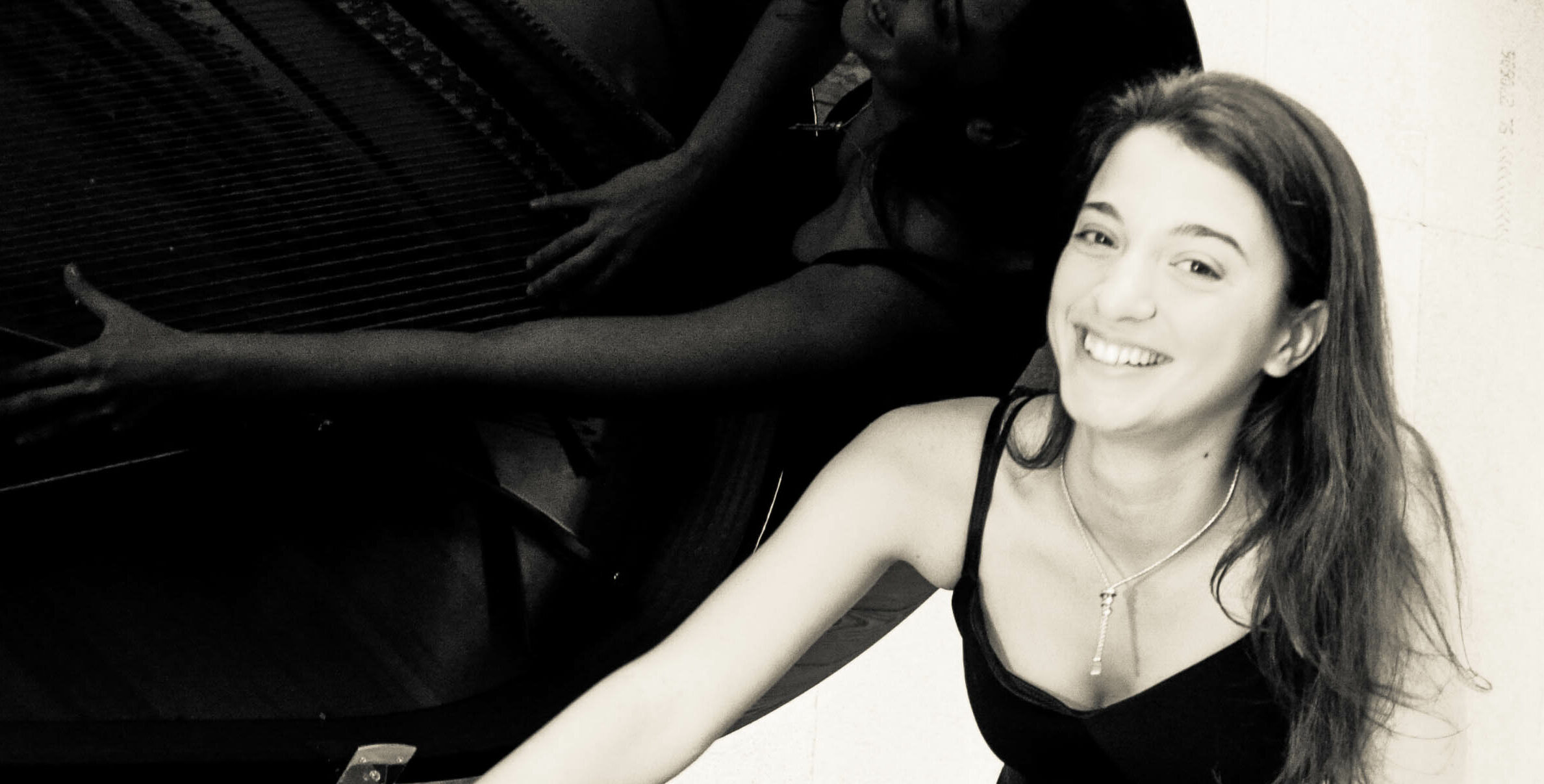I have a been a piano teacher for over 10 years.
I have taught piano and music theory to both children and adults in numerous music schools.
At present, I teach piano and music theory privately.
click on the photo to enlarge
What do I offer?
The aim of the lessons is to provide the pupils with a study method which allows the students to approach a new page of music with everything necessary to read, interpret and face its technical challenges.
How is a lesson structured?
During the lesson, the student plays one or more pieces.
I correct any possible reading mistake and explain how to solve technical problems by showing specific finger exercises.
I then show how to recognize those hints in the score which lead us to a correct interpretation of the music.
Once the pupil has acquired the technical and interpretative knowledge needed to perform the piece properly, they will be able to learn a new piece as difficult independently.
What do students learn in addition to piano pieces?
At whatever level, from beginner to advanced, the aims are similar: to improve reading and technical skills, as well as to widen interpretative ability, by adding more and more colours to one’s palette.
To achieve these goals, the study of theory and practicing sight-reading help us a great deal.
Studying theory helps the students to recognize recurrent patterns in the score. In so doing, a student does not have to read note by note, but could reach a wider and more precise view of the music.
A concrete instance: Let’s imagine a piano student who is reading a new piece with one sharp in the key signature.
If the student has not studied theory yet, he/she will draw closer to the book, count the lines of the staff to calculate where the sharp is placed, but when it comes to playing the new piece they will read note by note, normally thoroughly forgetful of the sharp.
On the contrary, if the student has acquired some basic theoretical knowledge, they will be able to narrow down the field of possibilities by a series of inferences: if there is only one sharp in the key it can be but F, therefore the piece must be set in G major, and the position of the hands is very likely to be a G major chord.
Having studied finger exercises set in G such as scales and arpeggios as well as theory, the student will place the fingers on the correct position in the blink of an eye, quite automatically.
On the other side, to practice sight-reading helps to recognize recurrent patterns at glance.
It follows a virtuous circle among practicing pieces, sight-reading, technical exercises and theory.
at what age to begin? Too young? Too old?
I teach students of any age.
The goals of the lesson are the same; what is different on the basis of the pupil’s age is the method chosen to introduce them.
I regularly welcome pupils from 6 years of age.
As far as children of preschool age are concerned, I accept pupils from 4 yearsof age.
In such cases, I suggest considering a trial lesson: since I do not teach general music education but my students receive piano lessons from the very beginning, it is necessary for the children to have reached a certain point of maturity. The speed of growth is personal, and sometimes postponing the first lesson of a couple of months is just enough.
Thanks to methods specifically created for preschool children, even at this age lessons consist of playing short piano pieces by reading the notes on the staff.
For children who are 4-6 years old, I strongly recommend taking two lessons per week. With only one lesson, children rarely improve: the previous lesson would be too distant, in consequence nearly all the lesson would be spent revising the argument of the week before. Two lessons per week are far more effective.
Aims and how to achieve them
To avoid dissatisfaction, it is important to choose one’s own goals on the grounds of the time one can devote to practice.
We can compare piano practice with sports: swimming 1 hour per week to feel fitter is different from a lifetime training of 8 hours per day in order to compete in Olympic games.
A very good way to set gradual and balanced goals is to participate in the students’ performances that I organize twice a year, as well as to take exams annually.
Students’ performances are not only an opportunity to share with family and friends what has been learnt, but it also is a fundamental chance to test oneself and to learn how to manage anxiety in front of the public.
That is why I regard them as a further lesson, the last of the term.
As a matter of fact, I prepare my students to deal with increasing difficulties: not only to perform in public independently, but also to play by hearth, as well as to play in duo, then in trio, et cetera.
In addition, I strongly recommend taking annual exams such as ABSM.
Exams and students’ performances are an excellent way to motivate them to practice, as well as to monitor pupils’ improvements.
relationship between students and teacher
I count it as fundamental that lessons create a relaxed as well as focused atmosphere, in order to allow each student to give their best to achieve their own goals.
For this purpose, I take maximum care of how I communicate with the pupils, in a way such that they feel spurred on to push themselves and to give their best positively cooperating rather than competing
IF I CHOOSE PRIVATE LESSONS INSTEAD OF A SCHOOL, WILL I HAVE CHANCE TO PLAY IN GROUPS WITH OTHERS?
Yes !!
Yes!
To learn how to play with others is a fundamental skill and requires a great deal of practice.
Piano does not play in the orchestra (where all the instruments of the same section, e.g. all the violins I, play the same part) but in chamber groups (in which each player is as important a soloist).
I usually organize chamber music lessons for my beginner students from their 3rdyear of lessons, but this may vary if a pupil reaches some achievements more quickly.
Thanks to cooperation with my colleagues, I can easily find pupils learning other instruments to play with my ow students. As yet, my students have had opportunities to play with a wide range of different players, gaining experience by playing with both string and wind players.
Chamber music lessons teach students how to listen carefully to other players and how to react to different ways of playing.
It is far from easy, but it is highly rewarding.
Students are encouraged to learn at least one piece a year to be played in public.
During students’ performances, pupils always play on their own or with other pupils.
In my view, playing in ensemble composed of both students and teachers is complete nonsense for pupils. As a matter of fact, a professional can easily lead a group by giving rhythmic stability, as well as to mask any students’ error by drawing or following the students’ way of playing.
This way, pupils can even play their own part with no awareness whatsoever of what other players are playing, and they are consequently not forced to react musically.
It is my firm believe that only by playing with other students can a pupil be coaxed into putting in the field those musical skills that a professional applies nearly unconsciously. In so doing, the pupil can learn how react to errors and how to prevent them, working in concert with others.
DIFFERENCES BETWEEN PRIVATE LESSONS AND MUSIC SCHOOLS
Music schools are usually preferred because they can offer an opportunity of comparing themselves with other students, as well as chances to perform in public.
As I have always regarded these two activities as essential, since when I began teaching I included them in my work.
Therefore, the only one difference left between private lessons and schools is flexibility.
Due to my job as musician, I can offer a wide range of days and times for lessons, even to recover cancelled dates, so that already-paid for lessons get never lost.
WHERE DO LESSONS TAKE PLACE?
HOW LONG IS A LESSON?
Depending on the age and the goal, I offer lessons of 45 or 60 minutes.
At my studio in Chiasso I also offer 20min. or 30min. lessons for preschool children.
WHERE TO RENT/BUY A PIANO?
An upright piano is a perfect solution to practice, far better than a digital piano.
A digital piano is usually as expensive as a used reconditioned upright piano.
If pupils are taking their very first steps on the piano, a rent-to-own piano would be the best course of action.
More details are available at PiconePianoforti, the piano tuner of trust I turn to any time one of my three pianos needs tuning or renovating.
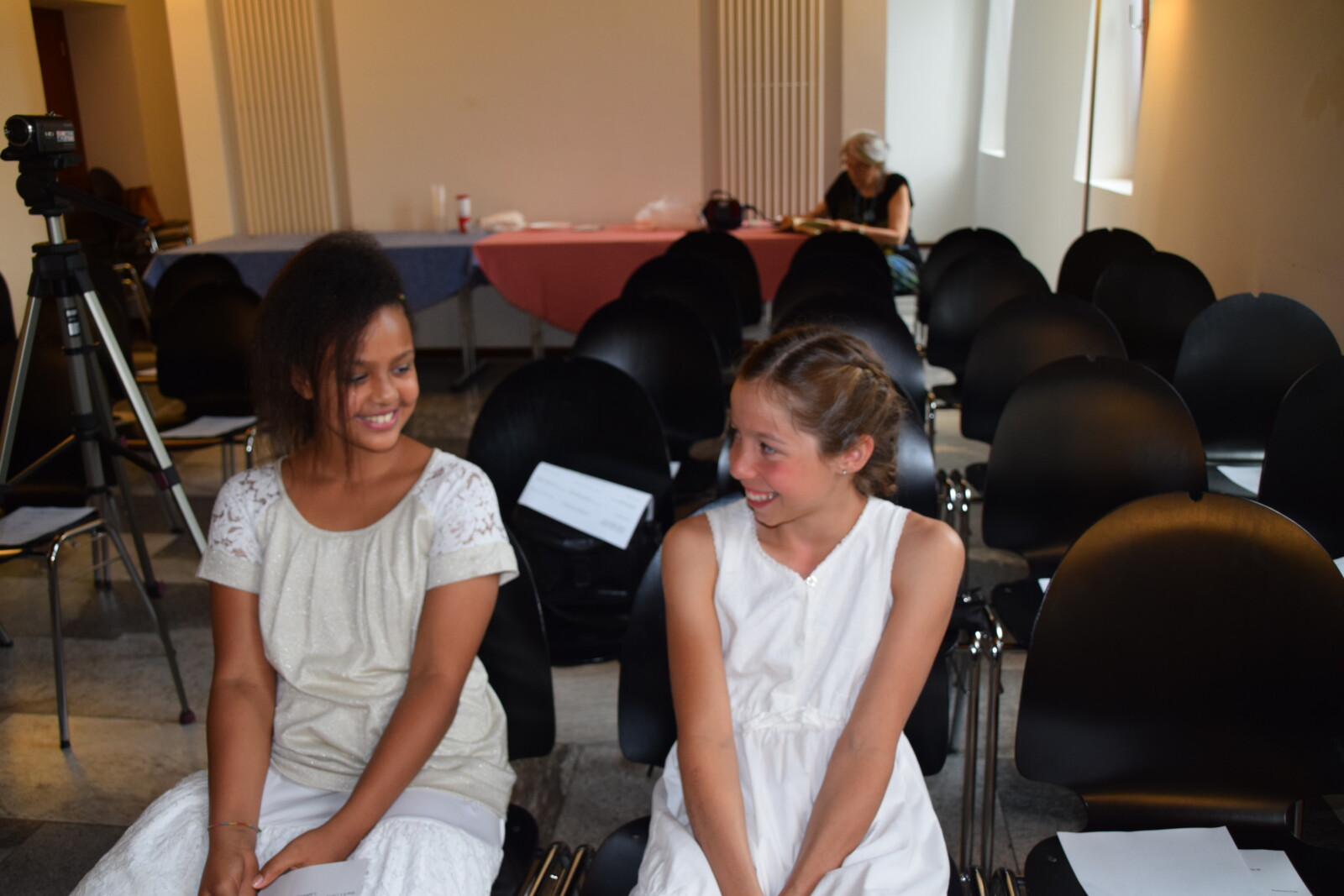
NOVITÀ 2018/2019 Ascolto guidato
Ascolto guidato ad un concerto
Quest’anno scolastico organizzo una gita per andare ad ascoltare un concerto tutti insieme.
Una lezione collettiva servirà ad introdurre i brani in programma per favorire un ascolto consapevole.
Il concerto sarà scelto in base all’accessibilità del programma tra quelli offerti in Ticino o a Como nella primavera 2019.
Maggiori informazioni tra qualche settimana. Stay tuned!




